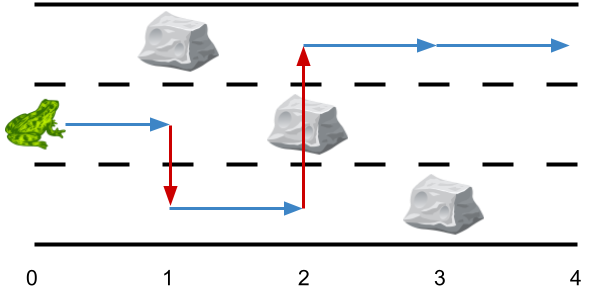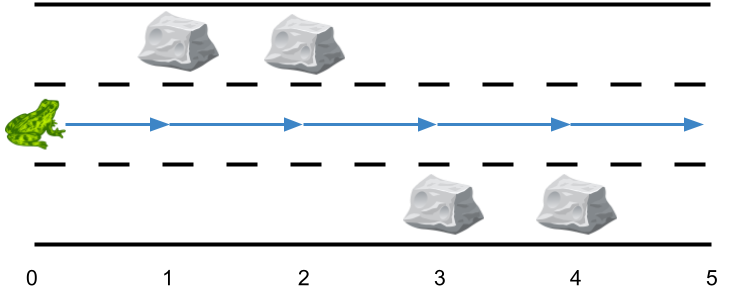1824. Minimum Sideway Jumps
Description
There is a 3 lane road of length n that consists of n + 1 points labeled from 0 to n. A frog starts at point 0 in the second ** lane ** and wants to jump to point n. However, there could be obstacles along the way.
You are given an array obstacles of length n + 1 where each obstacles[i] (ranging from 0 to 3 ) describes an obstacle on the lane obstacles[i] at point i. If obstacles[i] == 0, there are no obstacles at point i. There will be at most one obstacle in the 3 lanes at each point.
- For example, if
obstacles[2] == 1, then there is an obstacle on lane 1 at point 2.
The frog can only travel from point i to point i + 1 on the same lane if there is not an obstacle on the lane at point i + 1. To avoid obstacles, the frog can also perform a side jump to jump to another lane (even if they are not adjacent) at the same point if there is no obstacle on the new lane.
- For example, the frog can jump from lane 3 at point 3 to lane 1 at point 3.
Return the minimum number of side jumps the frog needs to reach any lane at point n starting from lane 2 at point 0.
Note: There will be no obstacles on points 0 and n.
Example 1:

1 | Input: obstacles = [0,1,2,3,0] |
Example 2:

1 | Input: obstacles = [0,1,1,3,3,0] |
Example 3:

1 | Input: obstacles = [0,2,1,0,3,0] |
Constraints:
obstacles.length == n + 11 <= n <= 5 * 10^50 <= obstacles[i] <= 3obstacles[0] == obstacles[n] == 0
Hints/Notes
- 2025/03/28 Q1
- dp
- 0x3F’s solution
Solution
Language: C++
1 | class Solution { |